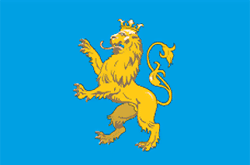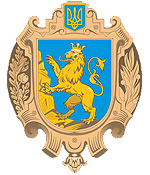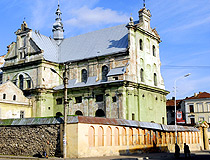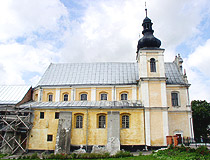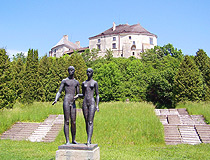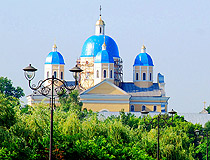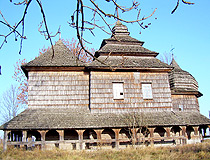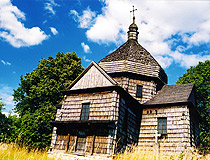Lviv Oblast - Overview
Lviv Oblast or Lvivska Oblast is an administrative region located in the west of Ukraine, one of the three regions of the historical and cultural region of Galicia. This is one of the leading regions of the country in economic, tourist, cultural, and scientific terms. In the west, the Lviv region is bordered by Poland.
The population of Lviv Oblast (2021) is about 2,478,000 (6.02% of the total population of Ukraine).
The area of Lviv Oblast is 21,831 sq. km. (3.62% of the total area of Ukraine).
Brief History of Lviv Oblast
In the middle of the 12th century, after the collapse of Kievan Rus, several Russian principalities existed on the territory of the Lviv region, which then became part of the Volyn and Galicia principalities. In 1254, Daniel of Galicia, the Galician-Volyn prince, assumed the title of “King of Rus”. In 1254-1325, the territory of Galicia was called the Russian Kingdom or Russian Land.
In 1386, Jadwiga, the Queen of Poland, joined the Russian Kingdom to Poland. In 1795, after the third partition of Poland, the lands of the present Lviv region, like the whole territory of Galicia, became part of the Austrian Empire called the Kingdom of Galicia and Lodomeria. From 1918 to 1939, the territory of this region was part of the Lviv Voivodeship of Poland.
In 1939, in accordance with the Secret Additional Protocol to the Non-Aggression Pact between Germany and the Soviet Union, this territory was annexed by the Soviet Union and became part of the Ukrainian SSR. December 4, 1939, Lviv Oblast with a center in Lviv was officially created.
After the Second World War, the territory of the Lviv region partially remained in the Ukrainian SSR. February 15, 1951, the border of the Lviv region with Poland took its present shape. May 21, 1959, all districts of the Drohobych region became part of the Lviv region and Lviv Oblast received its current borders.
Pictures of the Lviv Region
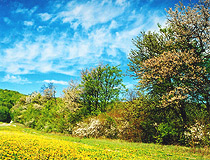
Spring in Lviv Oblast
Author: Oleh Kindiy
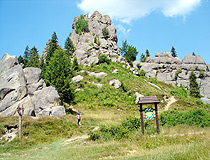
Remnants of the cliff-side fortress of Tustan in Lviv Oblast
Author: Andriy Verh
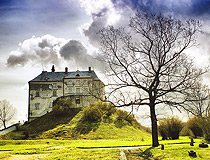
Olesko Castle in the Lviv Region
Author: Kabliuk Natalia
Lviv Region - Features
Lviv Oblast is located in the very west of Ukraine. The length of this region from north to south is 240 km, from west to east - 210 km. The Ukrainian Carpathians are located in the south-west of the Lviv region. The highest mountains are Mount Pikui (1,408 m), Mount Magura (1,362 m) and Mount Parashka (1,268 m). The northern part of Lviv Oblast is located in the forest-steppe zone. Forests cover more than 25% of the region. It has favorable conditions for the development of agriculture and recreation.
The climate is temperate continental, with warm humid long summer (often hot, cooler in the mountains) and mild winter (often with thaws, steady snow cover only in the mountains). The average temperature in July is plus 18 degrees Celsius in the flat part (Lviv) and around plus 13 degrees Celsius in the mountain part; in January - minus 4 and down to minus 7 degrees Celsius respectively. In the flat part of the Lviv region, the temperature is always about 4-6 degrees higher than in the Carpathians.
The Lviv region has one of the most developed transport networks in Ukraine. Important railway, automobile, pipeline, and electric arteries connecting Ukraine with the countries of Central Europe (Poland, Slovakia, Hungary, Romania) pass through its territory. The length of the state border between Ukraine and Poland in the territory of the Lviv region is 278.2 km. There is an international airport in Lviv.
The fuel and energy resources (deposits of natural gas, oil, and coal of the Lviv-Volyn coal basin in the north of the region) have the greatest value among the mineral resources of Lviv Oblast. Also there are deposits of combustible shale, potash and rock salts, sulfur, gypsum, building and refractory clays, marl, limestone. The basis of resort resources of the Lviv region are mineral waters of different chemical composition.
The food and fuel industries, mechanical engineering and metalworking, electric power engineering have the largest share in the structure of industrial production in the region. Local agriculture specializes in the cultivation of grain crops, potatoes, vegetables, sugar beet, flax, and some fruits (berries, apples, pears, plums).
Tourism in Lviv Oblast
Numerous architectural and historical monuments, as well as museums and theaters are interesting for excursions and tourism in the Lviv region.
In total, there are 886 archeological monuments (14 of national importance), 3,822 historical monuments (7), 3,431 monuments of architecture and town planning (794), 302 monuments of monumental art (1) in Lviv Oblast.
The most important objects of tourism:
- The ensemble of the historic center of Lviv (the Old Town) included in the UNESCO World Heritage List,
- The State Historical and Cultural Reserve “Tustan” (the remnants of the fortress of the 9th-14th centuries),
- The State Historical and Cultural Reserve in Belz,
- The State Historical and Cultural Reserve “Nahuievychi”,
- The branch of the Lviv Historical Reserve in Zhovkva,
- The monastery complex in Krekhiv,
- Old Russian townsites of the 10th-13th centuries in Zvenyhorod and Stilsko,
- The Golden Horseshoe of Ukraine: Olesko Castle, Zolochiv Castle, Pidhirtsi Castle, Svirz Castle.
Sanatorium-resort treatment and rest occupies one of the leading places in the structure of tourism in the Lviv region. There are about 100 sanatoriums, boarding houses, rest homes, tourist bases. Lviv Oblast is the 8th region of Ukraine by the number of sanatoriums and recreation institutions, the 2nd region by the number of sanatoriums and boarding houses with treatment (after the Crimea). The most famous balneological resorts are Truskavets, Morshyn, Shklo, Nemyriv, Skhidnytsya.
Folk crafts are developed in the Lviv region: relief wood carving, embroidery, glassware.
On the territory of the Lviv region there are 324 objects of the natural reserve fund with a total area of 132.5 thousand hectares, which is 6.1% of the area of the region. The Carpathian Mountains are a promising tourist destination.


